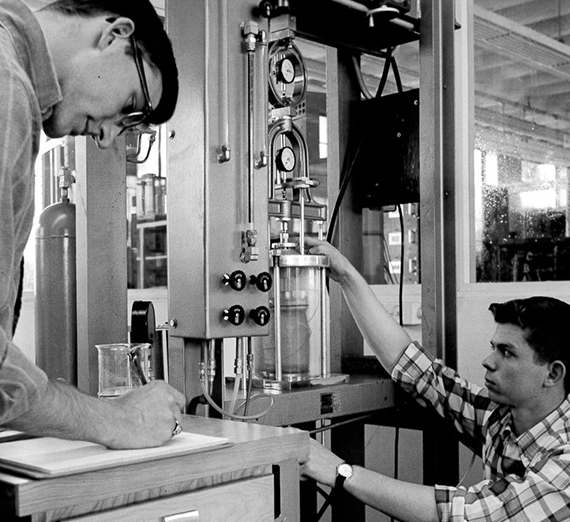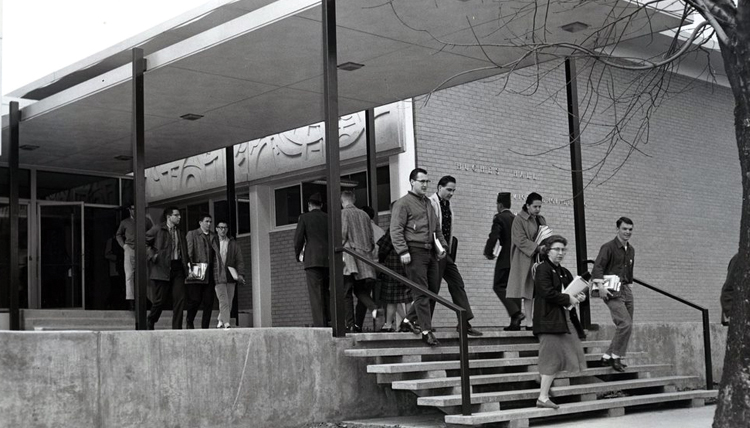Hughes Hall: A Solid Start

Since its construction in 1961, Hughes Hall has been home to innovation in science on GU's campus. Since then, the building has doubled in size, and in significance.
Much has changed for the sciences since 1990, when Gonzaga’s biology and chemistry rosters included four faculty members each, and three in physics. Today, the three sciences have a combined faculty of 50, plus experienced adjunct instructors and additional staff. It’s reflective of the added focus nationwide to address a job market increasingly in need of STEM prowess.
Back then, funding limited equipment and supplies, and faculty set up their own labs while managing full teaching loads. Today, funding through various sources – prominent among them the National Science Foundation, Howard Hughes Medical Institute, National Institute of Health and the M.J. Murdock Charitable Trust – supply a good share of the equipment and quality facilities, while tuition dollars from a constantly growing enrollment in the sciences provide for increased faculty, auxiliary staffing, research and lab coordinators, and funding for student research projects.
“Now we have lab coordinators to help prep every lab. Biology 105 has 12 lab sections in the fall semester alone,” says Professor Nancy Staub, who started at Gonzaga in 1991. “As the number of Gonzaga undergraduates grew, the number of biology majors has grown disproportionately, and we just couldn’t manage it without our lab coordinators.”
Former professors Robert Prusch and Peter Pauw started several outreach programs. The Science In Action! program, started in 2007, now sports its own coordinator and places more than 80 Gonzaga undergraduates in local elementary classrooms each semester. The department has also started programs to promote diversity and inclusivity in STEM, including the Gonzaga Science Scholars Program.
Chemistry Professor Joanne Smieja, at GU since 1988, says it used to take new faculty members two years to get their research labs functioning. “Today, they have a start-up package so they can be productive as soon as their contract starts.”
Physics Professor Eric Kincanon, approaching his 35th year at GU, remembers when faculty in his department scheduled labs whenever convenient for them, and students could adapt. Now, labs are offered at every available time.
But there were other growing pains, especially as more women joined the sciences. Staub and Smieja remember carefully planning their restroom visits and putting a sign on the men’s room to use it. Today, there are more women’s restrooms in Hughes.
With help from a $1 million grant from Murdock Charitable Trust and a $500,000 government Inland Northwest Natural Resources Research Center grant, Hughes underwent major expansion in 2004, expanding and updating labs, classroom space, faculty offices and equipment.
In 2021, the opening of the Bollier Family Center for Integrated Science and Engineering, the expansion of opportunities for faculty and students is unprecedented. Learn more about it here.

